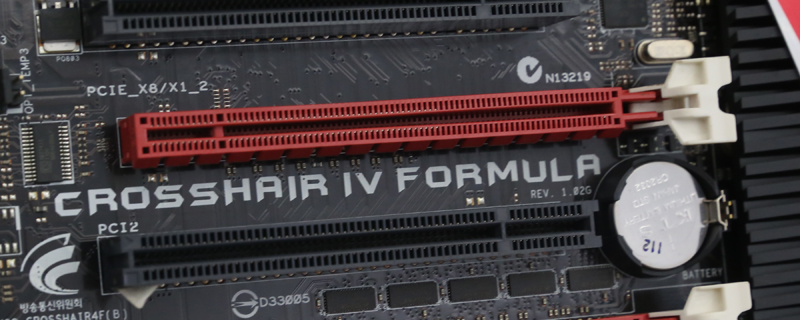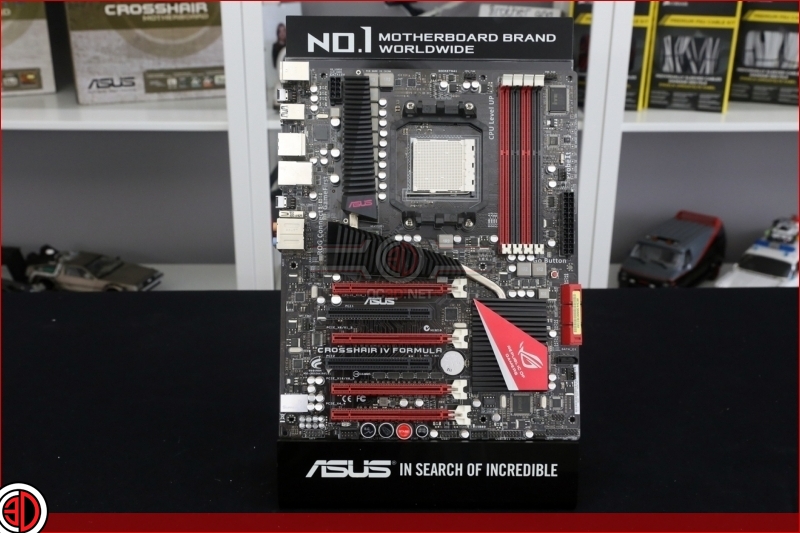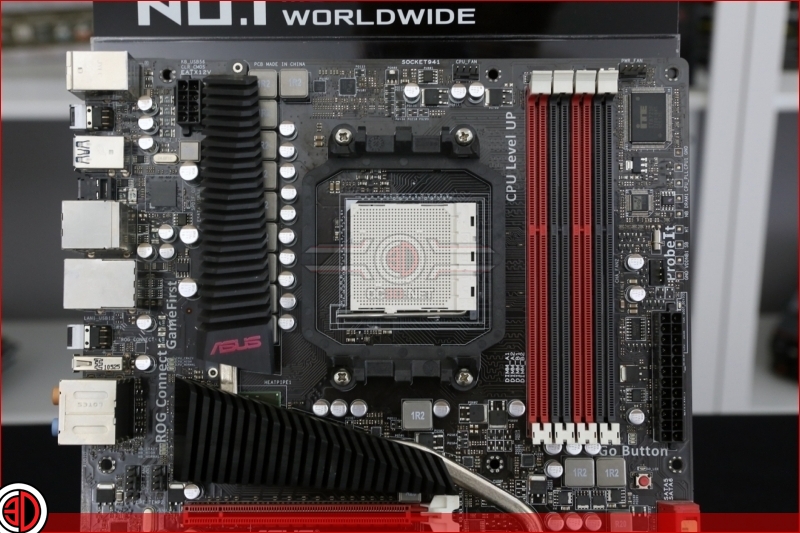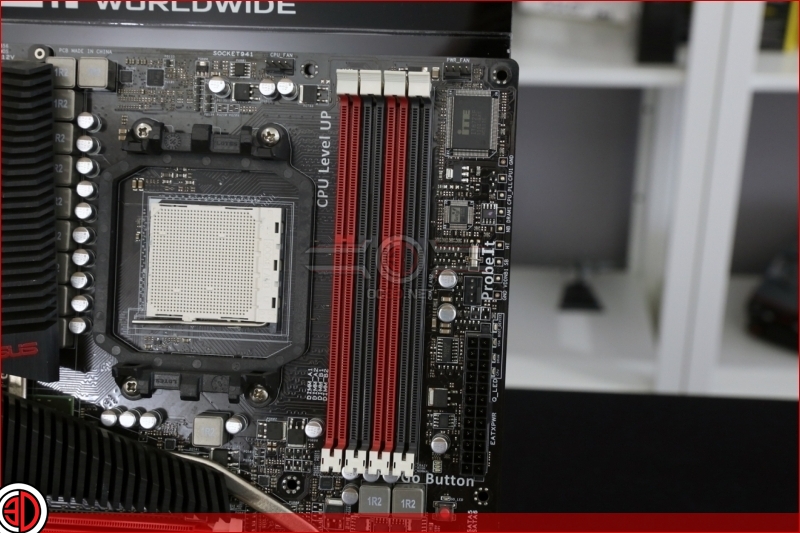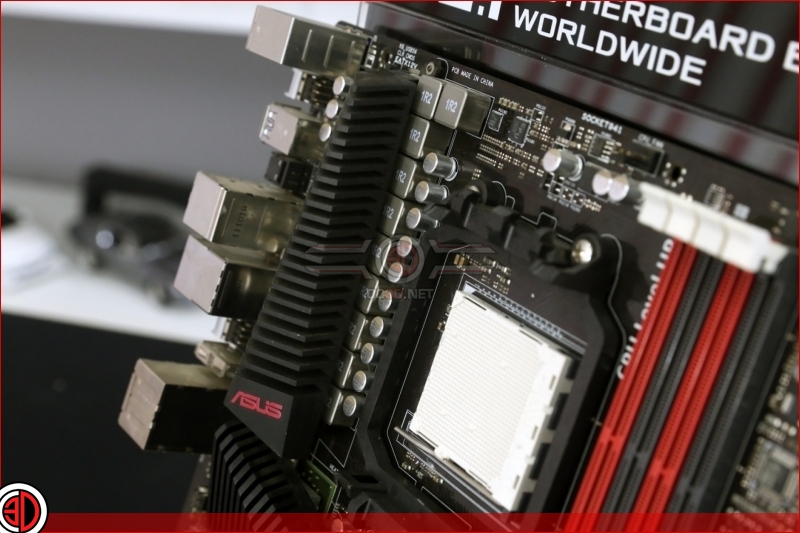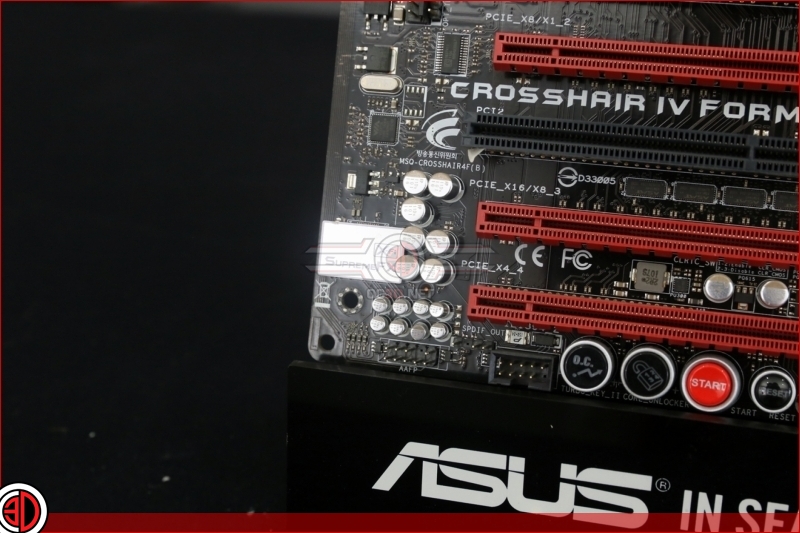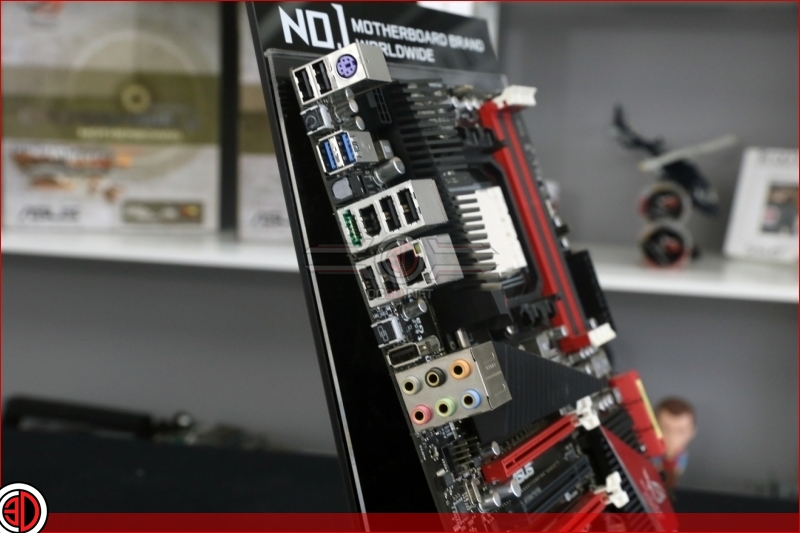ASUS Crosshair Evolution
Crosshair IV Formula
Now we’re cooking on gas. The Crosshair IV is unquestionably the first motherboard of the range that you could show to anyone and they’d recognise it as one of the ASUS ROG models. Whilst the Crosshair III might have come in the now famous red box, the Crosshair IV looked that good once you took the motherboard out of its packaging.
The Crosshair IV Formula could stake a claim to being the epitome of an ASUS ROG motherboard with all the hallmarks of that breed. Let’s tick them off as we go around it. We have a black PCB, those famous black and red plastics which did more to reduce the worlds supply of red LEDs and turn every gaming room into a tiny replica of the Reeperbahn than perhaps any colour scheme before or since. The ASUS ROG logo is writ large upon the heatsink, which have now transitioned from the pure copper look of the original Crosshair, through the nickel of the next two, to the black heatsinks which are now de rigueur. A couple of other ASUS hallmarks are found in with the slots themselves. The DIMM slots come with the now famous single latch design, and the PCI Express slots have the V-shaped removal tab which has found a home on all their motherboards since. The capacitors have changed too from the larger red-topped ones to the smaller black cap ones. Their placement is infinitely improved from earlier Crosshairs as well, with them grouped in little clusters rather than splattered hither and thither.
As for the actual hardware, the Crosshair IV is based upon the AMD 890FX chipset with the 850 Southbridge. DDR3 support has increased from 1600 MHz to 2000 MHz, for those of you who could afford the incredibly expensive DIMMs that could run at such speeds. We also have our first implementation of the 6 Gb/s SATA ports, and ASUS went all out, providing six of them in red plastic, with just a single, vertical, black SATA II connector. We also wave goodbye to the IDE connector which has finally shuffled off its mortal coil and joined the choir invisible. About time too. Speaking of new things the introduction of SATA III was joined by the introduction of USB 3.0. The USB standard had, in a few short years, taken over the world, and we were hungry for ever faster devices. Thus the Crosshair IV has 2 USB 3.0 ports and 7 USB 2.0 ports (one of which could be used for the short-lived ROG Connect if you were so inclined). We bid fairwell to the Coaxial SPDIF and have been left with the optical option which doesn’t look like going away any time soon. There is still the PS2 keyboard port for those of you who refuse to give up your IBM Model M, and Firewire is still here and still as unused and unloved as it ever was. Unlike the Crosshair III the Crosshair IV returns the SupremeFX audio to its place on the physical PCB.
Lastly there has been a slight switch around in terms of the expansion slots. Whilst the C3F went from 2 PCI and a single PCIe x4, the Crosshair IV has returned to the Crosshair II arrangement of two PCI and a single short PCIe. Following that? Good. One improvement though is that in triple GPU scenarios the main card now runs at 16x rather than 8x. So you have 16/8/8 instead of 8/8/8 of old.



